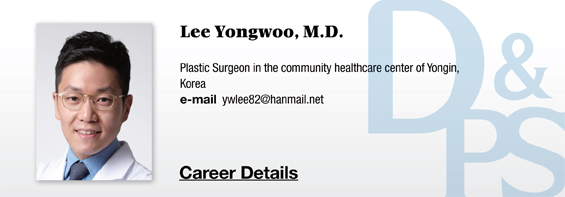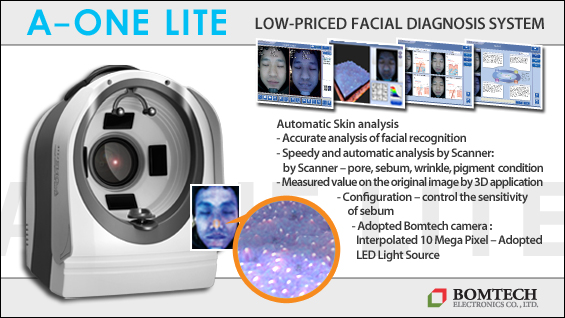
Dark circles
Dark circles are often used to refer to tear trough deformity, however, it is a bigger concept with a more extensive definition. Dark circles can be largely divided into the pigmented, vascular and structural types. The tear trough deformity is the most common cause of the structural type.
The pigmented type is characterized by brownish coloration around the upper and lower eyelids. It is often caused by hyperpigmenation of the skin. The Wood’s lamp examination of the eyelids area shows hyperpigmentation with the UV-sensitive film and is helpful for diagnosis. This type of dark circles is difficult to correct with fillers as it does not involve structural problems and often shows poor response to treatment.
The vascular type is commonly found in patients with thin and translucent skin. Unlike the pigmented type with coloration around the eyelids, this type presents blue, pink or purple coloration only lower eyelid.
Lastly, the structural type dark circles are characterized by a shadow thrown by the upper structures which disappears when the light is shone from the front. This type can be treated by filler injections or orbital fat transposition.
As dark circles may arise from a single to many etiological factors, it is important to clearly identify the causes to choose the best treatment.
[Advertisement] A-One LITE(Facial Diagnosys System) – Manufacturer: BOMTECH(www.bomtech.net)
Tear trough
The tear trough usually refers to the depressed area that slants downward from the medial canthus and continues to the mid pupillary line. It can be also called nasojugal groove but the term ‘tear trough’ is more commonly used when referring to the indentation medial to the mid pupillary line.
Many suggestions have been made regarding the etiology of tear troughs. In the past, tear troughs were thought to arise from the triangular hollowness between the orbicularis oculi muscle and muscles that elevate the lips. Tear troughs were also thought to be directly related to the orbital rim or arcus marginalis. However, anatomical studies have ruled out the triangular hollowness among the muscles. It was found that the orbital retaining ligament (ORL) actually lied caudal to the arcus marginalis. Many anatomical studies have followed and their results point to the following possible explanations.
First, concaveness of the bone around the tear trough can be a cause. With age, the facial bone loses volume in different degrees depending on the area. The most prominent indentation is found in the infraorbital region of the medial maxilla. This, along with changes in the soft tissues, increases the movement to the posterior vector and makes the tear trough more pronounced.
Second, the difference in skin thickness may cause a tear trough. The lid-cheek junction that connects the thin eyelid skin to the thicker cheek skin may develop a crease. The lid and cheek skins differ not only in thickness but in texture as well.
Third, the tear trough may be caused by the tear trough ligament. The tear trough ligament originates from the bone medial to the ORL(true retaining ligament) and connects to the skin. In the past, the ORL was thought to have a single layer, however, recent studies have shown that the ORL is a single layer at the medial tear trough ligament but bifurcates laterally at the orbitomalar groove. The lateral side has two layers and includes surrounding fat tissues, which weakens the pull. For this reason, the lateral orbitomalar groove is clinically less severe than tear trough deformity.
Moreover, the tear trough ligament lies between the palpebral part and orbital part of the orbicularis oculi muscle. As shown in <Image 1>, this area lacks fat in the floor and roof. In the past, SOOF (sub-orbicularis oculi muscle) was thought to stretch near the tear trough but anatomical studies have revealed that the SOOF doesn’t exists immediately past the midpupillary line. One can easily see in cadaver studies, that little fat is present under the tear trough. In other words, tear troughs lack fat and mainly consist of only three layers; bone, orbicularis oculi muscle and skin (Image 1). This is why the filler injection in the tear trough should differ from that in other areas where the injection is made in the fat layer.
The last reason for development of tear troughs is the boundary of the fat layer and its changes. The superficial fat can be divided by the inferior orbital rim into cephalic infraorbital fat compartment, caudal nasolabial fat and medial cheek fat. These three fat compartments are called the malar fat. A cadaver study of the lower eyelid surgery shows that the infraorbital fat is very thin and almost invisible. On the other hand, the two lower fat layers are thicker and tend to droop with age. The difference in thickness between fat layers become visible with age and cause the formation of tear troughs. Lambros reported that the location of tear troughs do not change with age but become more pronounced due to age-related changes of the surrounding skin and fat tissues. In short, tear troughs are not caused but enhanced by aging. Young people in their 20s and 30s also present tear trough deformity.
-To be continued-




















